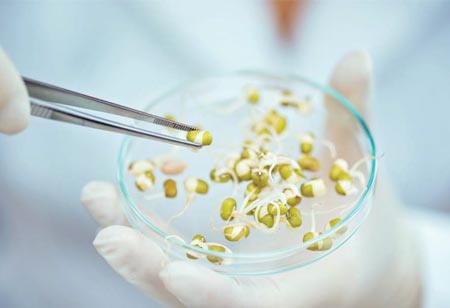1.What are the significant challenges faced by the seeds/seed treatment industry, and how do you, as the Global Head of Product Management Seedcare at Syngenta, assist in solving them?
Countries often have regulations governing seeds and seed treatments that may not be fully aligned with one another. This may pose challenges for larger customers who sell and distribute seeds in multiple countries. At Syngenta, we bring in our expertise in seeds and seed treatments to collaborate with all our business partners to ensure farmers have seamless access to high-quality seeds and seed treatments as necessary in different markets.
2. What are some of the new and emerging trends that have influenced your development of international marketing strategies for Seed treatment?
We see a lot of interest in biologicals, such as bio-stimulants, biocontrols, and inoculants. Growers see great value in these as they meet evolving demand while supporting and enhancing the chemistries they deploy. A lot of work is being done to understand compatibilities, particularly with living organisms, so that they can harmonize with the seed and other soil microorganisms.
Soil health is also attracting a lot of interest. The ability to convert more land to agricultural use is limited. Yet rising awareness and need for food security and a growing world population drive the need for more agricultural output. Therefore, we need to take good care of our soils, as they are the foundation of crop productivity. Seed treatments fit perfectly into this area of protecting the soil simply because of the precise application and low use rate. But it also supports conservation tillage practices due to its activity on most soil-borne diseases, soil pests, and nematodes. Cover crops and conservation tillage practices, like no-tillage, will often create a cooler and wetter seedbed. Seed treatments can help overcome these conditions so the seed can germinate and become a vigorous young plant, protecting its genetic yield potential.
We are currently rolling out our newest innovation, TYMIRIUM® technology. It will bring nematode control to a level that hasn’t been seen in the market as a seed treatment
3. What are some of the latest technology advancements that you would like to see for the successful execution of global marketing strategies in the agribusiness sector?
Besides biologicals, I would say the development of nematicide seed treatments is successful. We are currently rolling out our newest innovation, TYMIRIUM® technology. It will bring nematode control to a level that hasn’t been seen in the market as a seed treatment. This molecule's activity on key pathogens, such as fusarium, is also unique. It is simple to use, sustainable, and promotes unrivaled crop establishment.
4. How has your extensive R&D expertise and proven ability to execute the delivery of innovation for commercial success helped you in the current role of Global Head Product Management Seedcare?
The seed treatment business is quite a technical one due to its complexity, especially as you deal with soil and various environmental conditions. Understanding both parts of the puzzle helps us make quicker business decisions and identify new opportunities. An example is the interactions between soil-borne pathogens and pests and how soil conditions and abiotic factors impact them. Often these kinds of interactions and understandings are first visible after they are launched since the screening platforms used for development are simpler, with a focus on one research target. Understanding these new opportunities earlier and guiding the R&D team can save us significant time and earlier registrations.
5. How do you tailor marketing strategies for various nations with different seed treatment laws?
It is a team effort. Tailor-made marketing strategies by crops and by country are often needed. The global team sets the overarching direction when launching new molecules with global brand plans. In the individual markets, the various teams match the unique selling propositions of each product with the specific needs of growers in that market. Since you are applying a low rate on the seed, the labels and use rates are often quite different from country to country due to pest and disease pressure or local hybrids and varieties' susceptibility to these pests and pathogens. In some countries, you can register a rate range based on this pressure, but in other countries, you can’t.
6. As an ending note, what is your advice for other senior leaders and CXOs on developing effective international marketing strategies in the seeds/seed treatment industry?
It is all about listening to your customers. I love visiting farmers and our salespeople to better understand the current dynamics and needs of the market. This is an area that can’t be ignored. You can create the flashiest marketing story you like, but if there isn’t a need, then it doesn’t matter. Farmers are great businessmen looking at the value proposition and the benefits the investment will bring. Being able and prepared to listen to them, and deliver what they are looking for, is not only the first but also the most critical step.


